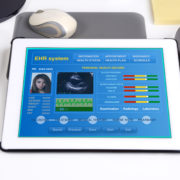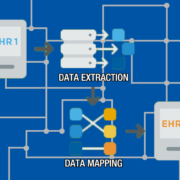What is MACRA and How Does It Impact Orthopedic Practices?
MACRA is an Act that supersedes the current Medicare reimbursement schedule. MACRA stands for the Medicare Access and CHIP Reauthorization Act. It is a pay-for-performance program that seeks to improve both the quality and accountability of healthcare facilities. This new payment framework acts as a reward for healthcare facilities that value quality care over quantity of services.
MACRA combines three separate programs into one, providing payments according to a Merit-based Incentive Payment System, also commonly referred to as MIPS. The three separate programs that MACRA combines are:
- Value-based Payment Modifier
- Physician Quality Reporting System
- Medicare Electronic Health Record incentive program
Understanding MIPS
MIPS serves as a Medicare payment adjuster determiner. Utilizing a composite performance score, healthcare facilities that meet certain criteria, known as eligible professionals (EPs), can receive payment bonuses for quality services. Low-performance scores, however, can lead to a payment penalty as well as a no-payment adjustment.
How is the composite performance score calculated?
There are four performance categories used to determine a health service provider’s composite performance score:
- Resource use
- Quality
- Meaningful use of certified EHR technology
- Clinical practice improvement activities
By the year 2022, MIPs scores can impact Medicare reimbursement payments by -9 percent to +27 percent.
How has MACRA Impacted Orthopedic Practices?
MACRA went into effect on January 1, 2017. Many healthcare providers, however, have found they aren’t appropriately equipped for the changes. In fact, small practices tend to be the most affected. These smaller practices don’t have access to resource professionals who can explain the complex changes and provide adaptive guidance. The chair of the Council on Advocacy for the American Academy of Orthopedic Surgery, Thomas C. Barber, MD, says that MACRA “is a complex reimbursement system, and I think everybody is going to have to learn a whole new way of doing things.”
Orthopedic practices have been directly affected by MACRA and MIPs. The Vice President of Government Affairs and Consulting Services, Lynn Scheps, says when the government first rolled out programs to help with meaningful use, “Orthopedists and other specialists were accommodated as an afterthought and many managed to meet meaningful use by claiming multiple exclusions.” One of the biggest hurdles for orthopedic practices was that they had to report according to nine quality measures. Only about four to five of these unrelated measures, however, applied to the orthopedic specialty. With MACRA, though, orthopedic physicians can participate in one of two payment systems:
- Merit-based Incentive Payment System
- Alternative Payment Models (APM)
It is believed that the new Merit-based Payment Program will lead to better meaningful use for specialists of all kind, including orthopedic specialists. There are some specialists who are excluded from having to follow MACRA. These exclusions apply to:
- Physicians in their first year of Medicare billing
- Physicians qualifying for payments under APMs
- Providers qualifying for MIPS-exempt bonuses
- Physicians who have a volume of Medicare payments that falls below a certain threshold
Since there are volume requirements under MACRA, it is not believed that many orthopedic practices will qualify for the APM option. Instead, they will operate under the MIPs option during their first few years of operation.
The Takeaway
One of the most important tips to follow in regard to adapting to the changes of MACRA comes from the Senior Implementation Manager at SRS, Lester Parada. The manager states, “Knowing what you need to capture is the first step and that’s where we have a deviation from the current regulation…What the practice wants to capture and analyze is different than what they are currently required to capture and analyze.”Once it is decided, however, which pieces of data need to be gathered, the next step consists of acquiring the appropriate EHR system to capture and store the data.











